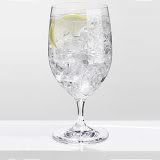Why? Because here in a country where we can bring fresh water gushing from our spigots at a moment's whim, it's easy to forget what a rare and precious blessing that fresh water is.
Rare - the element that covers 70% of the Earth's surface? Indeed. Just take a look at the numbers, drawn from the University of Michigan, the U.S. Geological Survey, and Water.org.
- While 70% of our planet’s surface is covered in water, 97.5% of that water is salty; only 2.5% is fresh. Nearly 70% of Earth’s fresh water is frozen in the polar icecaps and the Greenland glacier. Most of the remainder is present as soil moisture, or in deep, inaccessible aquifers. Only 0.007% of all water on earth is fresh and available for human use.
- Of the available water that is used globally, just 8% serves the basic daily needs of nearly 7 billion humans. Agriculture consumes 80%; industry consumes 12%, and much of that water is not reusable when it is returned to the global supply.
- According to the U.N., a human being needs a minimum of 13.2 gallons per day for drinking, sanitation, bathing and cooking. However, many people in drought-stricken nations get only 4 to 5 gallons of water per day.
- Almost 1 billion men, women and children lack access to safe drinking water, and 2.5 billion lack access to safe sanitation. Every year, 3.575 million people die from water-related illnesses - 84% of them children under 14 years of age.
- Meanwhile, here in the U.S., 20 states are facing shortages...while the average American uses 80-100 gallons of purified water per person per day. Your 5-minute shower uses more water than the typical person living in a developing country slum uses in a whole day
How can you do this? You can begin by discovering your daily water use with a household water audit.Then,once you’ve discovered where you’re using (or losing) the most water, you can begin making changes:
- Repair leaks yourself, or call in a plumber
- Install aerators in your kitchen and bathroom sinks to reduce the flow rate to 1.5 gallons per minute (gpm) or less
- Install low-flow showerheads (2.0 gpm or less) to save water while you get a spa-quality shower
- Replace your water-guzzling toilet with a Water Sense model (1.28 - 1.6 gallons per flush), or install a dual-flush converter, a Toilet Tank bag or flow diverter
- Check the age and water usage of your dishwasher and washing machine. Ideally, a dishwasher should use less than 7 gallons per load (gpl); a washing machine should use less than 23 gpl
- Rather than giving a tschotchke to sit on a friend's table, consider giving a gift of water to a thirsty community in their name through Seva Foundation.
- Or browse through this list of water charities, and give where you can.
- Finally, browse through my website for products to reduce water use in your own home...5% of the profits from any water conservation products you order will be donated to WaterForPeople.org.



 SAVE $$$ and energy with Green Irene's 10% to 45% price reductions on hard-to-find CFL and cold cathode lighting...
SAVE $$$ and energy with Green Irene's 10% to 45% price reductions on hard-to-find CFL and cold cathode lighting...



No comments:
Post a Comment